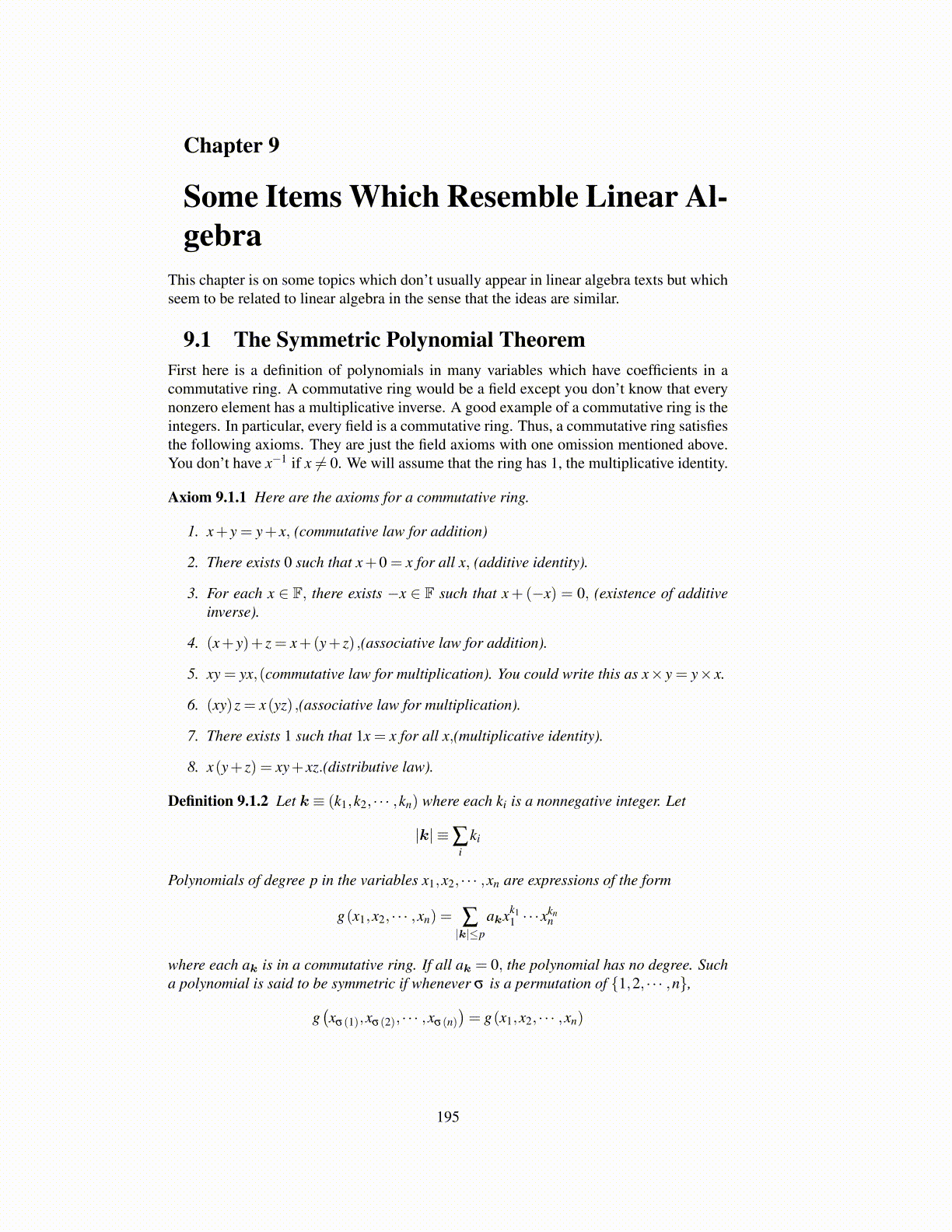
Chapter 9
Some Items Which Resemble Linear Al-gebra
This chapter is on some topics which don’t usually appear in linear algebra texts but whichseem to be related to linear algebra in the sense that the ideas are similar.
9.1 The Symmetric Polynomial TheoremFirst here is a definition of polynomials in many variables which have coefficients in acommutative ring. A commutative ring would be a field except you don’t know that everynonzero element has a multiplicative inverse. A good example of a commutative ring is theintegers. In particular, every field is a commutative ring. Thus, a commutative ring satisfiesthe following axioms. They are just the field axioms with one omission mentioned above.You don’t have x−1 if x ̸= 0. We will assume that the ring has 1, the multiplicative identity.
Axiom 9.1.1 Here are the axioms for a commutative ring.
1. x+ y = y+ x, (commutative law for addition)
2. There exists 0 such that x+0 = x for all x, (additive identity).
3. For each x ∈ F, there exists −x ∈ F such that x+(−x) = 0, (existence of additiveinverse).
4. (x+ y)+ z = x+(y+ z) ,(associative law for addition).
5. xy = yx,(commutative law for multiplication). You could write this as x× y = y× x.
6. (xy)z = x(yz) ,(associative law for multiplication).
7. There exists 1 such that 1x = x for all x,(multiplicative identity).
8. x(y+ z) = xy+ xz.(distributive law).
Definition 9.1.2 Let k ≡ (k1,k2, · · · ,kn) where each ki is a nonnegative integer. Let
|k| ≡∑i
ki
Polynomials of degree p in the variables x1,x2, · · · ,xn are expressions of the form
g(x1,x2, · · · ,xn) = ∑|k|≤p
akxk11 · · ·x
knn
where each ak is in a commutative ring. If all ak = 0, the polynomial has no degree. Sucha polynomial is said to be symmetric if whenever σ is a permutation of {1,2, · · · ,n},
g(xσ(1),xσ(2), · · · ,xσ(n)
)= g(x1,x2, · · · ,xn)
195